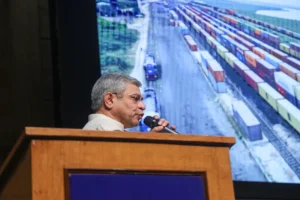
Narendra Modi
In a recent article published by The Telegraph, the focus is on India’s evolving political and economic landscape under the leadership of Prime Minister Narendra Modi. The article emphasizes India’s journey from fractious politics to political stability, enabling legal reforms, improvements in welfare systems, and significant infrastructure development. It highlights India’s potential and challenges while acknowledging the bold targets it aims to achieve.
The author mentions India’s recent achievement in space exploration with the successful Chandrayaan-3 mission, which made India the fourth country to achieve a “soft” landing on the Moon. This accomplishment is seen as a testament to India’s growing influence on the global stage.
India’s economic growth, population surpassing China’s, and increasing global engagement are highlighted as indicators of its rising stature. The article notes major investments and business activities in India by global companies like Apple, Foxconn, Micron Technology, and Goldman Sachs.
India’s influence is expanding beyond economics, with the Indian Premier League becoming one of the world’s most valuable sports leagues, and Indian culture making its mark in global entertainment, as seen in the Spider-Man movie featuring an Indian superhero.
The article discusses India’s demographic advantage, with a young population that can drive economic growth. However, it also raises concerns about job creation, education standards, income inequality, and identity politics.
While acknowledging the progress made under Prime Minister Modi’s leadership, the article highlights the need for India to address these challenges to fully realize its potential. The government’s initiatives in digitization and economic reforms are seen as promising steps toward economic growth.
The author mentions India’s aspiration to become the world’s third-largest economy by 2029 and a developed country by 2047. Achieving these goals will require sustained economic growth, investment in human capital, and addressing various societal challenges.
The article underscores India’s unique ability to navigate its complexities and contradictions, making its rise on the global stage both promising and challenging. It concludes by stating that India’s ascent is not guaranteed but remains a compelling story of progress and potential.
To read more such news, download Bharat Express news apps


















